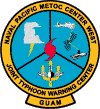

I am Orville Ingram. I was born on June 21, 1943 in Washington, D.C. at the old Doctors Hospital that was located in N.W., Washington, D.C.

My Mom,Dad and I lived on Bryant Street Northeast from 1943 until the Spring of 1949 when we moved to the country. I lived in Northern Virginia(Fairfax County) from 1949 until I graduated from high school in June 1960. My first two years of school were at Langdon Elementary School in N.E. Washington. I attended Lincolnia Elementary School and the graduated from JEB Stuart High School in Fairfax county Virginia.

At that time I joined the United States Navy. I went on-board a passenger train along with others to Great Lakes, Illinois via the Pennsylvania Railroads "The General". The thing is that when I got out of the Navy in 1966, I returned home on the Pennsylvania Railrod train, "The Admiral". Maybe the railroad thought that I was going in the U.S. Army :-) They got it right when I got out. :-)
I was sent to Weather School at N.A.S. Lakehurst, New Jersey upon completing boot training. While there we learned a lot about weather observations, forecasting, and high altitude weather.
Upon completion of school, I first was sent on the U.S.S. Independence which at the time was the largest ship in the world. The Independence is an air-craft carrier. We were the command ship for the Navy at the time. We spent nine months on a Med Cruise which was a cruise to the Mediterranean Sea. The carrier stopped in Italy, France, Spain, Lebonon, Sicily, and Greece.

After I finished my duty on the carrier, which lasted for one year, I was transferred to Norfolk, Virginia where I was assigned to building R-41 which was a weather research outfit. From there I was assigned to "Operation Deepfreeze" which was the Navy's name for duty in Antarctica. I arrived at Antarctica on a Navy C-130 at Williamsfield which is the landing strip for McMurdo Sound. McMurdo Sound is the main base for the Navy. After a period of adjustment, I was sent to Little Rockford, Antarctica. Little Rockford was a weather observation station about 600 miles from the main base. There was nothing else between Little Rockford and McMurdo Sound.







While at Little Rockford location "79S-148W",I, along with four other U.S. Navy personnel, studied the upper atmosphere and made weather observations. This would keep us busy most of the time. At other times we had to due base maintainence, cooking, melting snow for water and studying. Contact with the main base was made by shortwave radio. The main base was McMurdo Sound, Antarctica and was located nearly 600 miles away. We were isolated, as there was nothing else within 600 miles of our base. No plants, animal life, just snow, wind, and ice.



Upon leaving Antarctica I was assigned to the U.S.S. Kretchmer which was a Destroyer Escort (DE-329). We were stationed at Providence, Rhode Island for a while. From there we were transferred to Viet Nam to do search and destroy missions. We hit numerous enemy targets while stationed there. I did all of the weather observations and high atmosphere observations for the ship. I also did weather forecasts for Navy ships in the area.

God's own sailors, the real men of the blue water (deep ocean) Navy, i.e., Destroyer Escort Sailors. Not to be confused with the wimps and civvies that sail in subs and carriers. If you never rode an escort, then you were never in the real Navy.



Laid down by Consolidated Steel, Orange TX. on June 28 1943.
Launched August 31 1943.
Commissioned December 13 1943.
Decommissioned September 20 1946.
Loaned to USCG and Recommissioned WDE-429, June 20 1951.
Returned USN and Decommissioned August 12 1954.
Reclassified and converted DER-328, October 21 1955.
Recommissioned September 22 1956.
Decommissioned October 1 1973.
Stricken September 30 1973.
Fate Sold May 14 1974 and broken up for scrap.
Chi Chi Jima, Bonin Islands:

Agana, Guam:

While stationed on Guam I was assigned to Nimitz Hill, which was the main building for the Navy in the Pacific. It was the headquarters for the Admiral in charge of the Western Pacific region. I was assigned the the Joint Typhoon Warning Center which was assigned to the Navy and the Air Force. I was weather leader for early warning typhoon and weather forecasts that originated from this facility; a job that held great responsibility.
Upon finishing duty here I was sent back to the United States and the Navy facility at Great Lakes, Illinois. Here I "pushed" boot camp recruits for about 9 weeks. Upon completion of this assignment I was honorably discharged from the U.S. Navy and sent home to Toledo, Ohio.
While in Toledo I worked for a local company for a short while. I then moved to Vincennes, Indiana and Vincennes University, a two year college of which I highly recommend. Vincennes University is one of the oldest junior colleges in the country. Since I was there it has grown considerably and offers many courses that are transferable to nearly any major University in the country. When I finished VU I transferred to Ohio State and completed my degree in Child Development and Juvenile Justice.
I spent a time with the State of Virginia and then came to Montross, Virginia and worked locally. I worked at Stratford Hall Plantation and was there for 26 1/2 years. I retired from there in 2001.



